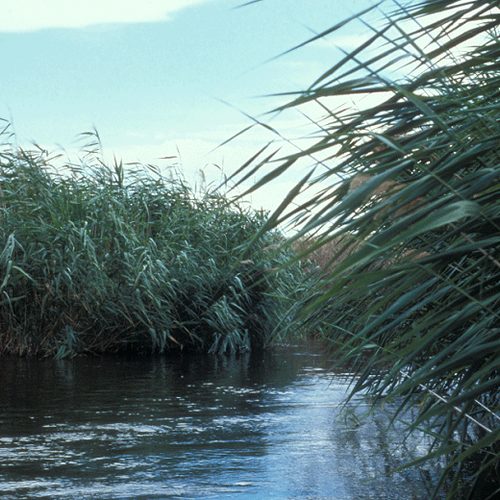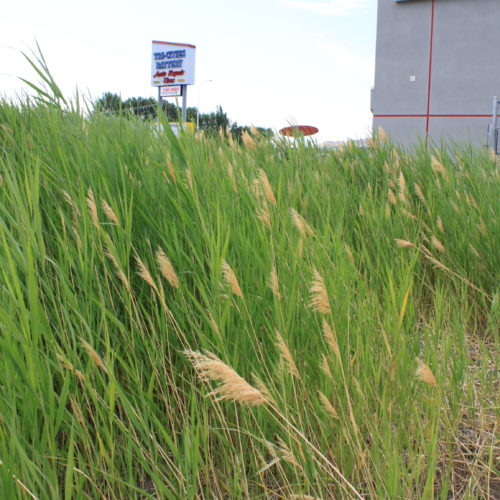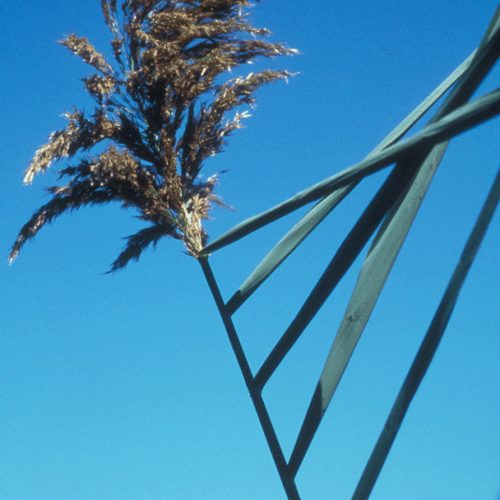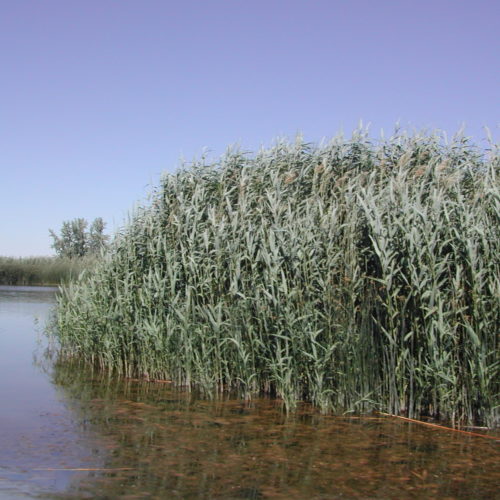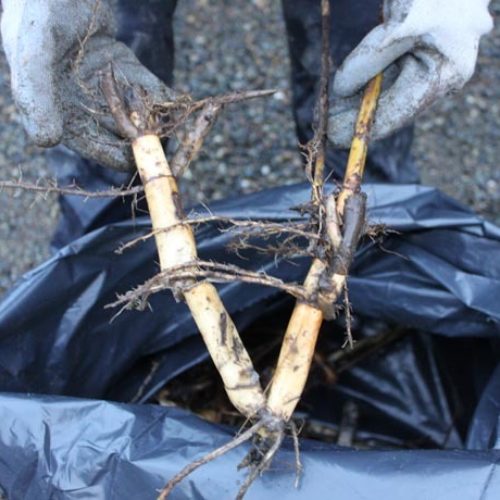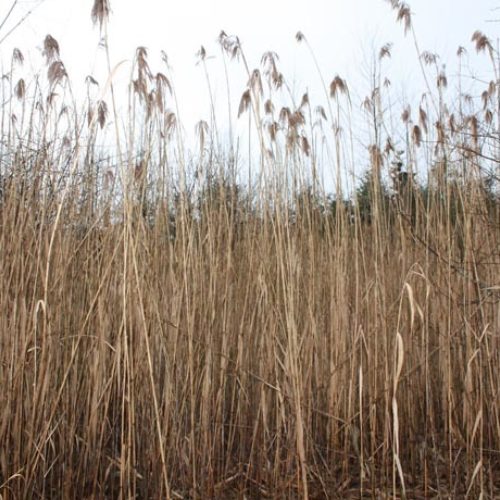Common Reed
Phragmites australis
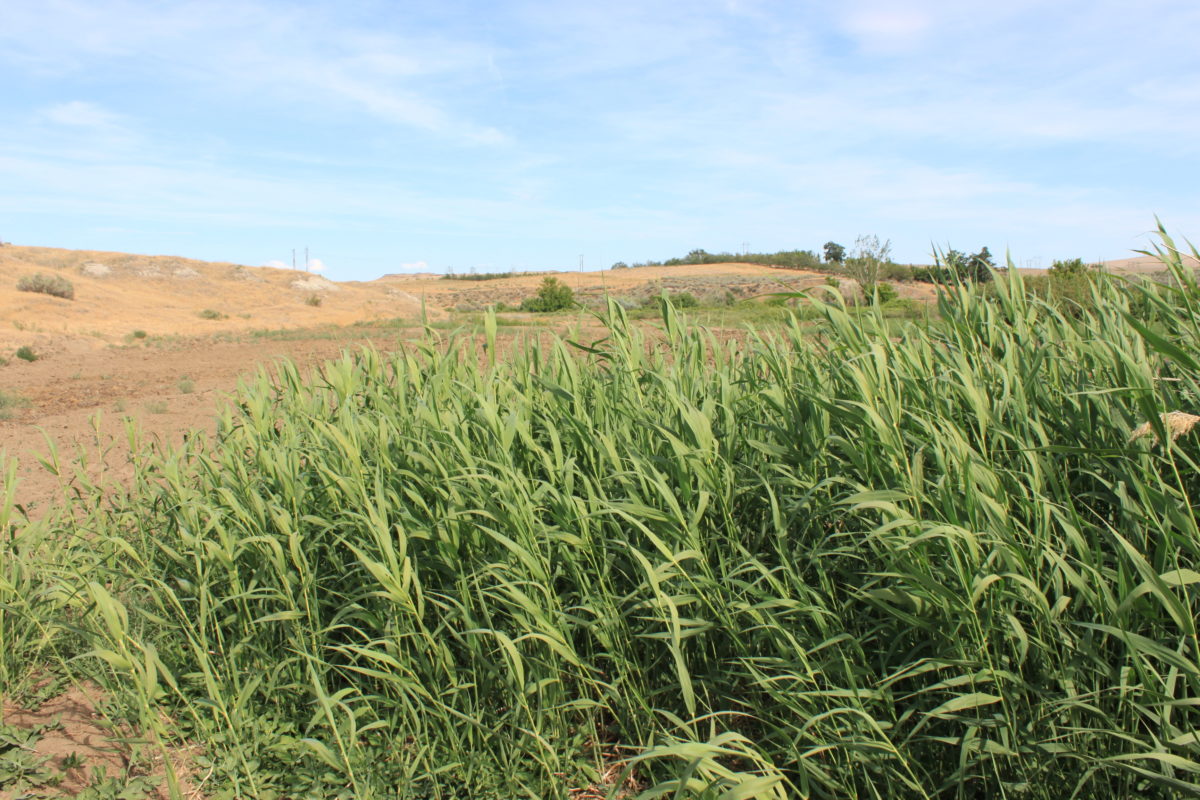
Family: Poaceae
Weed class: B
Year Listed: 2003
Native to: thought to have originated in Europe, Asia, and Australia.
Is this Weed Toxic?:
not known to be
Why Is It a Noxious Weed?
Common reed forms dense, monotypic stands in wetlands. Wildlife is displaced when wetland hydrology, structure and function are altered. Water quality deteriorates when water flow or circulation is adversely affected by this species.
How would I identify it?
General Description
It is a large perennial grass with creeping rhizomes and distinctive feathery, plume-like flowerheads. Common reed looks very similar to our native, genotype of Phragmites australis, which is being outcompeted by the invasive genotype.
Flower Description
The flowers are dense and silky. Floral spikes are tawny, purplish and 1 to 16 inches long.
Leaf description
The leaves are lance-shaped and 8 to 16 inches long and 1/5 -1.5 inches wide. The leaf blade is smooth. Loose blades will twist in the wind to one side.
Stem description
Stems are woody, rough, hollow culms and can reach 12 feet tall.
May Be Confused With
It may be confused with native populations of Phragmites. Native genotypes are less dense, the stems are thin and shiny. The flowers are also less dense. Giant reed, Arundo donax, which is on the monitor list, may also look similar to common reed. If you need help with plant identification, please contact your county noxious weed coordinator.
Where does it grow?
Common reed is found in disturbed and non-disturbed sites that hold water, including roadside ditches and depressions. It is typically found in or near wetlands. Please click here to see a county level distribution map of common reed in Washington.
How Does it Reproduce?
Common reed is a clonal grass species that reproduces both vegetatively and by seed dispersal.
How Do I Control It?
General Control Strategy
Care must be taken not to produce new plants. All plant material should be removed since rhizomes can produce new plants.
Mechanical Control
Cutting has been used successfully for control. Multiple cuttings of common reed at the wrong times of the year may increase stand density. Cutting can be used for successful control by cutting it just before the end of July when most of the food reserves produced that season are removed and the aerial portion of the plant reducing the plant’s vigor. This regime may eliminate a colony if carried out annually for several years. Care must be taken to remove cut shoots to prevent re-growth. Disking can be used but it can result in an increase of plants since rhizome fragments can sprout new plants. Burning does not reduce the growing ability of common reed unless the roots are burned, which is difficult to achieve.
Cultural Control
.
Biological Control
Grazing has not been successful since cattle consume only the above ground portions of the plant.
Herbicide Control
Please refer to the PNW Weed Management Handbook, or contact your county noxious weed coordinator.
If you are treating common reed near standing water, we recommend the Washington Department of Ecology website for information on aquatic weed management and herbicides, or contact your county noxious weed coordinator.
For More Information
See our Written Findings for more information about common reed (Phragmites australis).
See our postcard for early detection information about common reed.
Thurston County NWCB Fact Sheet on common reed
King County NWCB Fact Sheet on common reed
Control Options for Common Reed from King County NWCB
Control Options for Common Reed from Lincoln County NWCB



